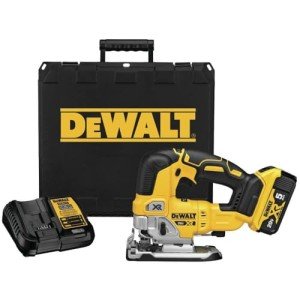
Power Tools Online
FollowOverview
-
Founded Date June 17, 1901
-
Sectors Medicine
-
Posted Jobs 0
-
Viewed 6189
-
Field of activity Project Manager
Company Description
Shop Power Tools Isn’t As Tough As You Think
The Workhorse of the Shop Power Tools
 Hand-held power tools are powered by electricity, internal combustion, or compressed air. They can be used to cut, drill, sanding or grinding materials.
Hand-held power tools are powered by electricity, internal combustion, or compressed air. They can be used to cut, drill, sanding or grinding materials.
 One of the first power tools every woodworker should have is a table saw which can take care of virtually any cutting task. Also, consider a miter saw stand, as well as a drill/driver set.
One of the first power tools every woodworker should have is a table saw which can take care of virtually any cutting task. Also, consider a miter saw stand, as well as a drill/driver set.
Table Saw
A table saw is the most powerful of the shop power tools and may be the most versatile tool for woodworking. It is able to cut, cross-cut, miter cut and even dado and rabbet stock. It can also cut angled surfaces to create frames or chests. It can also make planters, chests, or frames.
The saw has a large circular blade that spins at high speeds. It has fairly large tables (infeed and outfeed) that support the wood as it moves through the blade. Blade guards protect the saw blade, preventing wood from getting caught and then throwing it back to the operator. The saw is also protected by a riving knife or splitter that is a vertical protrusion located directly behind the blade that can take the form of a pin or fin.
Tablesaws of the contractor style are equipped with a larger motor, which is hinged off the rear and drives the blade by using two or three rubber V-belts. These saws are mostly used by carpenters but are also found in the home shop. They have more features than portable saws, like a sliding miter table.
Table saws that are smaller come with a lighter motor that is typically belt-driven. These saws are more geared towards the hobbyist and home use. Many have an adjustable mitertable that allows users to make intricate cuts, like those needed for picture and mirror frames, or boxes or drawers.
It is essential to use a tablesaw properly to avoid injury. When cutting rips make sure to remain to the left and keep your hands from the saw’s blade. It is crucial to make use of an extension stick or a guide block when cutting, especially in workplace settings where HSE standards require you to remain at a minimum of a hand span away from the blade.
A simple adjustable tapering tool you can make yourself is the fastest and most simple method to cut tapered legs for powertool uk many woodworking projects. A tapering jig is adjusted for any angle between 15 and 0 degrees, allowing you to cut any set of tapered legs for furniture such as tables or cabinets in your shop.
Bandsaw
A bandsaw can be used to cut metal and wood into different shapes. It’s an excellent tool for custom fabrication. It’s also a useful tool for furniture making, cabinetry, and other woodworking projects. The saw is able to create curved cuts including circles, and cut through a variety of materials, including ice.
There are two types of bandsaws: vertical and horizontal. Vertical bandsaws are great in resawing, curved cuts and freehand cutting. Horizontal bandsaws make better straight and angled cut. The saw can be operated either manually or through powered feed systems. Manual bandsaws require users to manually lower and raise the blade each time they cut, whereas power fed systems are more efficient.
When using bandsaws, it is important to put safety first. Wear protective equipment, such as safety goggles or ear protection to shield yourself from dust and noise. Keep your feet and hands from the blade to prevent accidents and injuries. It is also crucial to correctly set the saw for safe operation. Ensure that the blade is securely secured and aligned properly and that the guides are adjusted.
Depending on the material you’re cutting it could be required to adjust the saw’s speed and feed rate to achieve optimal results. Regular maintenance and adjustments to the blade tension and tracking will ensure that your bandsaw produces accurate and clean cuts while prolonging its lifespan.
The blade of a bandsaw is likely to be made of heat-treated stainless steel to resist the wear and tear that is caused with frequent use. The teeth of the saw are also joined together to give it a unique shape and protecting against damage from a sudden shock.
The throat depth of a bandsaw determines the size of the piece of wood it can cut. Larger throat depths are used to cut larger pieces of lumber and are ideal for resawing or ripping both of which require cutting across grain. Some bandsaws come with tilting tables which can be used to make angled cuts and repurpose scrap wood.
Dust Collector
Woodworking tools create a lot of dust and chips that must be gathered to safeguard your health, your shop’s cleanliness, as well as the life span of your equipment. The kind of collector you require is determined by the amount and size of power tools you use in your woodshop as depending on the frequency of their use. The most effective woodworking dust collection systems offer superior filtration that removes small particles and help you breathe more easily, healthier and more comfortable while you work.
Nederman provides dust collection systems to meet your requirements, whether you are a small-scale shop or a large-scale production woodworking facility. Our woodworking dust collection waste management, combustible and waste collection dust solutions combine care for the environment while enhancing in productivity and quality of machines.
There are several types of woodshop dust collectors on the market, including:
A dust extractor that is basic can replace your shop vacuum. These units are connected to your power tool using an hose that connects to the dust port. The hose is activated when you switch on the tool and pulls dust and debris out of your workspace.
Depending on the brand you select, the majority of dust extractors have HEPA filters to effectively remove the fine dust particles that can lead to respiratory problems over time. They also come with a higher CFM airflow (cubic feet per minute) to move more air. They could also include an airspeed indicator and a system that automatically cleans the air filters.
If you have a larger shop or would like the added flexibility to use your woodworking tools on the go, think about a portable woodshop dust collector that comes with a rechargeable battery and a plug-in connection that connects directly to the power tool. These units are easy to transport and can handle multiple tools at once. These units are compact and have a caster-base. They also come with a collection filter or bag for easy emptying.
If you’re an experienced woodworker, or contractor, you might need a stronger dust collection system. These are more expensive than an extractor, but offer a wider selection of filtration and can be mounted to a wall or in their own space. These units can be used to clean up plaster, drywall and other demolition projects, as well as woodworking projects.
Planer
The planer is a power tool that should be in every woodshop ever be without. It’s not the most glamorous or flashy tool, however it can make a significant difference in your ability to transform rough lumber into beautiful and useful projects. It can be used to cut boards down to a specific thickness and works on both hardwoods and softwoods. It is also very useful to tackle unwieldy, knotty or twisted stock that is impossible to work with hand tools.
A high-quality portable planer could be worth the cost of admission to any woodworking shop. You may be able to locate a planer for sale for sale at a bargain price, but you must pay attention to the condition and the tables for infeed and outfeed. These items will determine the performance of your planer, and whether it will last for a long period before you need to replace components. If the cutter head isn’t of a high quality it will soon wear out and you may need to replace it within a very short amount of time.
Many people confuse the planer with the jointer, however they are not the same machine. A jointer will make an entire board straight and flat, while the planer can cut boards down to a certain thickness. Some woodworkers employ both machines at once to finish a project. But, they’re both essential for any workshop that handles rough lumber on a regular basis.
A commercial-grade planer is a great investment if you want to do professional woodworking and are looking for reliable equipment. They are designed to operate in situations where production speed is more important than surface finish. These machines can save you a great amount of time, however you must be cautious not to overload them. They could be able to burn out. They should also be maintained properly to ensure that they function properly. A regular maintenance schedule in the shop can prolong the life of your planer.